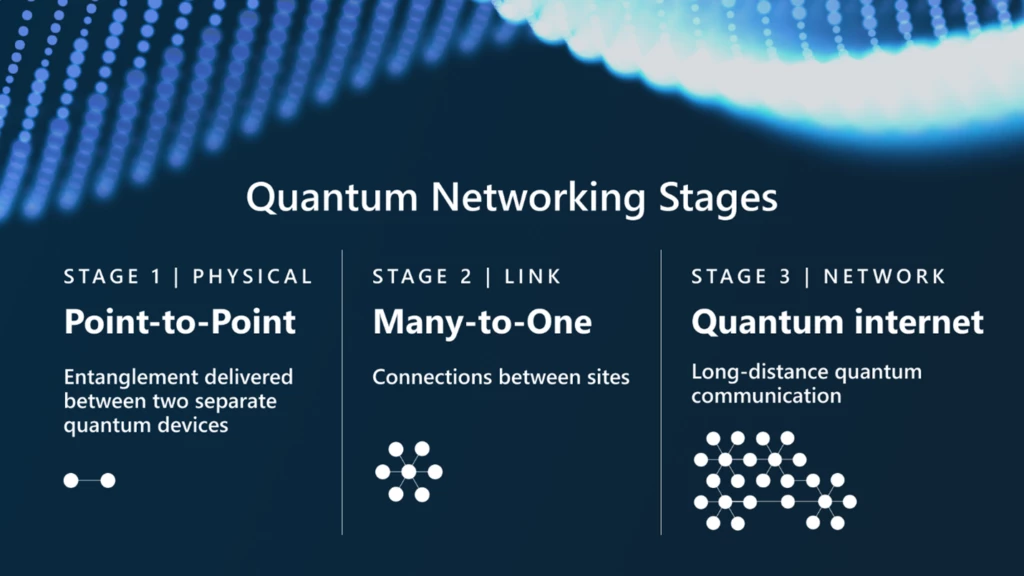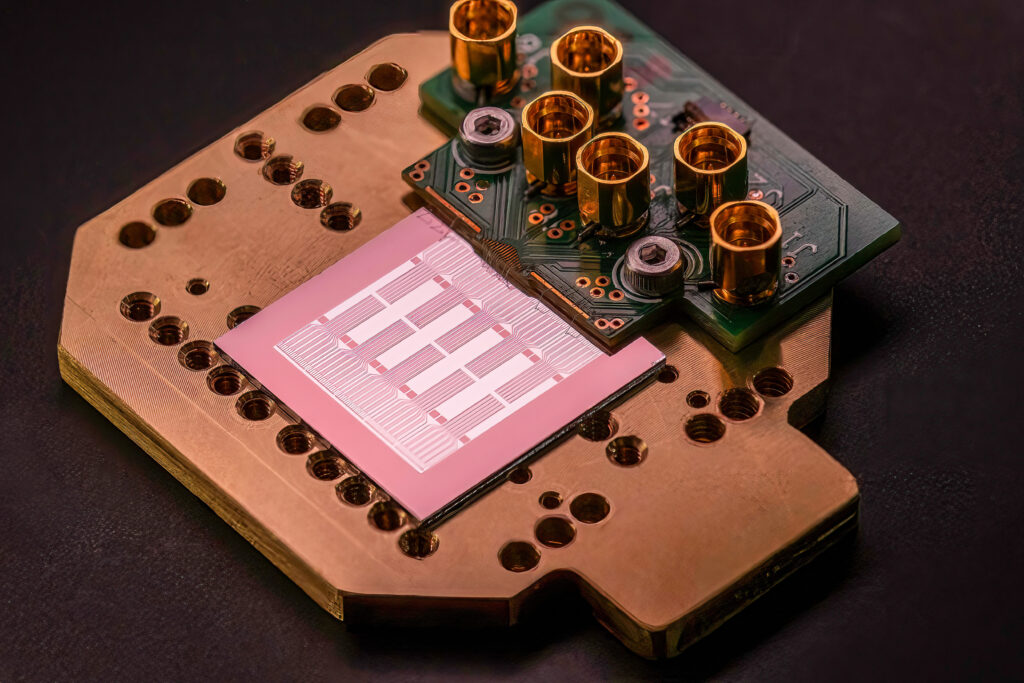We are excited to announce a strategic co-innovation collaboration with Photonic Inc., a company focused on building scalable, fault tolerant, and distributed quantum technologies. Our shared mission is to unlock the next stages in quantum networking and empower the quantum computing ecosystem with new capabilities enabled by our unique and complementary approaches to scalable quantum infrastructure.
By combining Photonic’s novel spin-photon architecture that natively supports quantum communication over standard telecom wavelengths with the global scale and state-of-the-art infrastructure of Azure, we will work together to integrate quantum networking capabilities into everyday operating environments. Together, we aim to deliver new technologies that will enable reliable quantum communication over long distances and accelerate scientific research and development with quantum computing devices to be integrated into Azure Quantum Elements.
Powering the quantum ecosystem with the next stage of quantum networks
“We are thrilled about joining forces with Photonic in improving the world through quantum technologies. There is an opportunity to ignite new capabilities across the quantum ecosystem extending beyond computing, such as networking and sensing, and unlocking applications and scientific discovery at scale across chemistry, materials science, metrology, communications, and many other fields. The capabilities we aim to deliver with Photonic can enable this vision and bring about quantum’s impact far more quickly than otherwise possible.”—Jason Zander, Executive Vice President of Strategic Missions and Technologies, Microsoft.
Realizing this vision requires a fundamental capability: entanglement distribution over long distances. Photonic’s unique architecture is based on highly connected silicon spin qubits with a spin-photon interface. By using a qubit with a photon interface, this novel approach communicates using ultralow-loss standard telecom fibers and wavelengths. When paired with the Microsoft global infrastructure, platforms, and scale of the Azure cloud, this technology will integrate new quantum networking capabilities into everyday operating environments.

Together, Microsoft and Photonic will address three stages of quantum networking.
- At the Stage 1 physical layer, we will aim to deliver entanglement between two separate quantum devices via photons through telecom fiber.
- To enable the Stage 2 link layer, we will aim to deliver a never-before demonstrated quantum repeater that can capture, entangle, and hold quantum information reliably for a short time.
- Finally, at the Stage 3 network layer, we will focus on delivering from our co-innovation collaboration a reliable quantum repeater, one that is fault-tolerant and operational with our Azure cloud. With this technology, we can overcome any limitations on distance in the network, and enable the ability to create a full-scale, global quantum internet.

Co-innovating to accelerate scientific discovery
“It will take a global ecosystem to unlock the full promise of quantum computing. No company or country can do it alone. That’s why we’re incredibly excited to be partnering with Microsoft to bring forth these new quantum capabilities. Their extensive global infrastructure, proven platforms, and the remarkable scale of the Azure cloud make them the ideal partner to unleash the transformative potential of quantum computing and accelerate innovation across the quantum computing ecosystem.”—Dr. Stephanie Simmons, founder and Chief Quantum Officer of Photonic, and the Co-Chair of Canada’s National Quantum Strategy Advisory Board.
It is only through global collaboration and co-innovation that we will be able to empower people to unlock solutions to the biggest challenges facing our industries, and our world. Just like the cloud democratized access to supercomputers—once available only to governments, research universities, and the most resourced corporations—we are on a mission to engineer a fault-tolerant quantum supercomputing ecosystem at scale on Azure. We announced last June our roadmap to a Level 3 quantum supercomputer along with peer-reviewed research demonstrating that we’ve achieved our first milestone.
Scientific discovery is crucial to our global future, and we want to empower scientists today with the best available offerings in the ecosystem, which is why as part of our co-innovation collaboration we plan to integrate Photonic’s unique quantum hardware into our Azure Quantum Elements offering as it becomes available. Our collaboration with Photonic seeks to enable scientific exploration at Level 1, foundational quantum computing with a firm commitment to reach higher levels of resilience and scale on the path to quantum supercomputing in the future.

With Azure Quantum Elements, your quantum solutions will be completely integrated with high-value advancements in high-performance computing (HPC) and AI so you can transform your research and development processes today with the certainty that you will be ready to adopt quantum supercomputing at scale seamlessly in the future. You can sign-up for our Private Preview of Azure Quantum Elements now.
To learn more about how Microsoft and Photonic will be working together to advance the next stages of quantum networking and empower the quantum ecosystem with new capabilities, register for the January episode of the Quantum Innovator Series.
Learn more about Photonic Inc.
Photonic is building a scalable, fault-tolerant and unified quantum computing and networking platform, uniquely based on proven spin qubits in silicon. Photonic’s platform offers a native telecom networking interface and the manufacturability of silicon. Headquartered in Vancouver, Canada, Photonic also has offices in the United States and the United Kingdom. To learn more about the company, visit their website.
